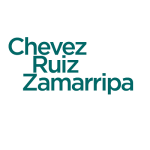Maquila companies in Mexico have been a fundamental pillar of cross-border transactions, mainly with the United States, since the incorporation of the regime in 1965.
A maquila (maquiladora) is a limited risk company dedicated to the assembly, manufacturing and/or processing of raw materials and the exportation of the finished product to a foreign-based related party, which provides the maquila with most of the raw materials and fixed assets to perform its activity.
They are an attractive option for foreign companies given that they help to maintain their competitiveness in a growing global market and create thousands of jobs in Mexico.
Throughout the years, the Mexican government has implemented provisions for a principal foreign tax resident operating in Mexico through a maquiladora.
Article 181 of the Mexican Income Tax Law (MITL) states that for a company to be considered a maquila, it has to demonstrate that the foreign-based entity does not constitute a permanent establishment in Mexico. Therefore, Mexico must have a double taxation treaty with the country in which the other company resides (mostly companies resident in the United States) and there must be compliance with the transfer pricing provisions set forth for maquila companies.
Since the incorporation of the transfer pricing provisions in the MITL in 1997, the maquila industry has been the focus of much attention, given the set of compliance rules to determine that a maquila transaction complies with the arm’s length principle. The rules have been modified to reduce the scope of analysis to comply with the transfer pricing provisions.
Reform triggers an exponential increase in APAs
The 2014 tax reform introduced the first significant amendment of the transfer pricing provisions for a maquila company in Mexico.
The amendment eliminated the option for maquila companies in Mexico to prepare a transfer pricing report supporting the taxable profit based on the transfer pricing provisions set forth in the MITL, and limited the compliance of the maquila transaction to one of the following:
A taxable profit of 6.9% of the total value of the assets used in the maquila operation (both owned by the Mexican entity and the foreign related party) or 6.5% of the total amount of costs and expenses for the maquila operation; whichever is higher. This is commonly known as the safe harbour approach.
To request an advance pricing agreement (APA) before the competent tax authorities in Mexico, to determine a taxable profit that complies with the arm’s length principle considering the functions performed, risks incurred, and assets used in the maquila transaction. In this regard, once the APA is resolved, the result could be applied for a total of five years according to Article 34-A of the Federal Tax Code; that is, the tax year under analysis, a previous year and the three following years.
At that time, it was understood that the Mexican tax authority (Servicio de Administración Tributaria, or SAT) and the Internal Revenue Service (IRS) agreed on arm’s length benchmarks for different industries, therefore providing tax certainty and an acceptable level of taxable income for taxpayers through the APA option.
Those circumstances resulted in an exponential increase of APA submissions in Mexico, which went from being almost non-existent before 2014 to more than 600 APAs.
The SAT found itself stretched given the amount of APAs submitted. This resulted in most maquila companies not having a resolution for their APA submission for a few years, but nonetheless they had to comply with different obligations, such as annual tax returns and other deliverables.
This situation led the SAT to establish, in conjunction with the IRS, the Qualified Maquila Approach (QMA) in 2020.
The adoption of a fast-track approach
The objective of the QMA, also referred to as fast-track, was to standardise the taxable profits of maquila companies based on general formulas for different industries, such as electronics and automotives.
Additionally, each category would be divided in terms of whether the maquila under analysis was capital or labour intensive, with formulas requiring input from the company’s financial information to obtain the taxable profit for the maquila company.
Neither the SAT nor the IRS provided specific information on how the formulas of the QMA were obtained, and only disclosed that the methodology reflects Mexican transfer pricing provisions, support documentation requirements and other attributable tax dispositions for maquila companies.
Even though the QMA lacked the in-depth analysis that a traditional APA would include – considering the functions performed, risks assumed, and assets used by a company – it was a straightforward methodology for maquila companies to determine the taxable profit for each tax year, and obtain a resolution for five years, which would, in turn, facilitate compliance with the obligations set forth in Mexican tax law.
Notwithstanding, for tax year 2022, the SAT eliminated the possibility for maquiladoras to submit APAs to comply with transfer pricing provisions, leaving the safe harbour methodology as the only available option.
This situation resulted in most maquila companies requesting APA submissions as of December 2021, before the tax reform entered into force in 2022, which would give the maquila companies a possible resolution to apply on their taxable profit until 2024, given a positive outcome.
Three key issues
Even if the vast majority of maquila companies in Mexico submitted an APA to comply with their transfer pricing provisions for the following years, there are still three important topics that need to be addressed:
Pending APA resolutions from the SAT;
Most maquilas will have a substantial change in their taxable income after 2024; and
A lack of versatility on transfer pricing provisions for maquila companies.
Delays and uncertainty
Even though most maquila companies submitted an APA just before the tax reform of 2022, there is still a high level of uncertainty as to whether the APAs will be resolved in a timely matter and with the expected outcome.
The SAT is once again in a position where APA submissions are significantly high in number, so delays in responses are more likely, even for companies with previous APA submissions, as well as uncertainty in the final results to be included in the APA.
Meanwhile, maquila companies must comply with their yearly obligations, such as submitting an annual tax return based on the taxable profit obtained from the APA submission. In the event that the SAT determines a different outcome for the APA, the company would have to submit amended tax returns and other documentation to comply with the resolution.
Changes to taxable profit from 2024
Another topic of concern is that most maquiladoras will have a substantial change to their taxable profit after tax year 2024, once the APA term concludes.
In general, safe harbour methodology has been considered a costlier approach than APAs or a general transfer pricing methodology, so maquiladoras will have to be prepared accordingly and perform periodic reviews of their financials and the taxable profit that would be obtained following safe harbour.
A lack of options
The above situation leads to another matter that so far has not been addressed much in the industry but that is of the utmost significance: the lack of options that maquiladoras in Mexico will have in order to comply with their transfer pricing provisions.
For this, it is important to refer to the basic principle of transfer pricing provisions, which is the arm’s length principle. Article 9 of the OECD Model Tax Convention states that where the conditions are set or imposed between associated enterprises in their commercial or financial relations and differ from those made between independent enterprises, profits that would not have been approved under such conditions may be included in the profits of that enterprise, along with the corresponding tax.
The arm’s length principle
The OECD Transfer Pricing Guidelines for Multinational Enterprises and Tax Administrations (the ‘OECD Guidelines’) elaborate on the arm’s length principle by stating that in seeking to adjust profits based on the conditions that would have been applied between independent enterprises in comparable transactions and comparable circumstances, the arm’s length principle treats members of a multinational enterprise (MNE) group as separate entities rather than as inseparable parts of a single unified business.
Therefore, the attention is focused on the nature of the transactions between the members of the MNE group and whether the conditions differ from the conditions that would be obtained in comparable uncontrolled transactions, by establishing a comparability analysis.
The OECD Guidelines establish that, under the arm’s length principle, associated enterprises should obtain a profit that parallels that which would have been obtained between independent enterprises in comparable transactions, and perform reasonable adjustments to attain the aforementioned comparability when possible.
The MITL aligns with the OECD Guidelines regarding the arm’s length principle. Article 179 of the MITL establishes that tax contributors that conduct transactions with related parties are obligated to determine their accumulated income and deductible expenses by considering the prices, amounts or profit margins that should have been used in, or obtained from or with, independent parties in comparable transactions.
It is understood that transactions or companies are considered comparable when there are no significant differences between the price, amount or profit margin based on the established methodologies set forth in the MITL, and when there are such differences, these can be eliminated by reasonable adjustments.
On the other hand, Article 181 of the MITL states that the safe harbour methodology determines that a maquila company must base its taxable profit on 6.9% of the total value of the assets used in the maquila operation, or 6.5% of the total amount of costs and expenses for the maquila operation; whichever is higher. These benchmarks have neither been updated nor modified in the MITL since 2002, even though economics has changed through time.
The safe harbour methodology only considers a fixed margin over assets or total costs, without taking into consideration the characteristics of the maquila company under analysis, the industry to which it belongs, macroeconomic conditions, or any other measure of comparability to ensure that the taxable profit obtained is similar to what third parties would obtain for the same transaction.
Before the tax reform of 2022, Mexican maquila companies still had the option to submit an APA and, even if selecting the QMA methodology, which uses already-established formulas, at least the methodology had three formulas, depending on the industry to which the maquila company belonged.
Questions arising from the 2022 tax reform
The tax reform of 2022 not only limits the options through which a maquila company can comply with its transfer pricing provisions, but the remaining methodology also lacks most of the basis for which transfer pricing provisions were implemented in the first place.
It will be important for Mexican maquila companies to conduct analysis in advance, to be prepared for the safe harbour methodology and mitigate the possible impact on their taxable profit.
The tax reform of 2022 raises two important questions. Firstly, whether the transfer pricing provisions set forth in the MITL and in the OECD Guidelines are being considered for the taxable profit that maquila companies determine for their transactions with foreign related parties. Secondly, whether there will be any adjustments or considerations in the following months or years to address the possible challenges that the MITL establishes regarding the arm’s length compensation for maquila companies.














